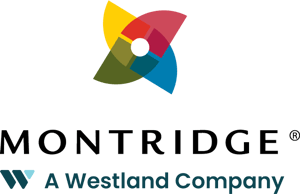
Guest Blogger: Chemistry Consulting Group
Chemistry Consulting Group is a full-service HR consulting firm servicing clients across Canada and throughout the US. They provide HR Consulting, Recruitment Services and Leadership Development to private and public sector organizations as well as non-profit entities. Chemistry takes time to understand your business needs and provide support in the areas where you need it, so you can continue to do what you do best – and let them handle the rest.
Canadian employers rapidly adjusted our workforces when the Covid-19 pandemic shut down the world. Then employers dealt with the Great Resignation which sent us into the tightest labour market we have ever experienced, and now, we are about to begin adjusting again in the Great Rebalancing stage. Through the Great Rebalancing stage, Canadian employers must strategize how they can best meet changing workforce preferences and the resulting leadership skills that are required..
The exercise of rebalancing our business practices is largely driven by the needs of the workforce.
Reconsider Your Benefits and Compensation Offerings
A recent survey from Robert Half found that 50% of respondents are currently looking or planning to look for a new role in the first half of 2023, with 39% of respondents in search of better benefits and perks and 62% in search of higher salaries. During this rebalance stage, employers must therefore first reconsider their benefits and compensation offerings. The talent shortage has provided job seekers with the leverage to demand not only higher compensation but improved benefits and professional resources, making the hiring process much more difficult with the small labour pool available.
Accommodate Remote and Hybrid Work
Further, it is evident now that many employees have had a taste of remote and hybrid work and achieved better work-life balance as a result, workforce preferences are changing.
Of the survey respondents in search of new roles in 2023, 27% advised they are in search of greater flexibility to choose when and where to look. The topic of allowing employees the flexibility to work wherever they prefer has been a subject of much debate over the past few years.
When employers were forced to send employees home to work remotely during the COVID-19 lockdowns, there were concerns that productivity levels would start to decline. However, this myth was busted in many sectors as productivity levels began to rise. According to a 2021 study from Statistics Canada, 90% of new teleworkers reported being at least as productive as they did in their usual place of work, with 32% noting they accomplished more work per hour than previously.
Now, a larger percentage of employees prefer to continue working remotely or in a hybrid work arrangement since they have adapted to the new ways of working, have a healthier work-life balance, and feel they can be just as productive, or more so, working from any location.
To a lesser degree, some employees still prefer to come back to the office full-time due to unwanted isolation and declining mental health. Therefore, employers now need to be able to accommodate both of these employee preferences as it is key to retaining their workforce.
Upskill Your Leadership Teams
As employers and leaders, it is evident that we need to adjust our approach to better align with today’s workforce preferences. Instead of imposing a work structure, we must look to accommodate workforce preferences to keep the modern workforce engaged and committed to our organizations. When it comes to determining what changes need to be made in the workplace, today’s workforce is now in the driver’s seat.
In order to manage employee preferences, leaders today must be well-trained and upskilled. Leadership teams must be equipped with new problem-solving and negotiation skills to manage employee preferences and expectations in regard to benefits and compensation offerings.
Further, managers must now be equipped with adaptive coaching capabilities to effectively manage employees wherever they choose to work.
Additionally, for the first time in some organizations, the focus has shifted from managing targets to overseeing outcomes. While managers previously may have focused on the specific tasks employees completed in a day, due to the transition to remote work, leaders became more accustomed to assessing productivity through the overall completion of key deliverables and projects. Leaders today should therefore be able to motivate their team while at the same time, deliver clear project tactics and modernize how the deliverables are being met.
In order to assist leaders in obtaining the skills required for today’s workforce, employers should be looking to invest in their teams and carve out a healthy budget for professional development and training.
Summary
Shifting workforce preferences creates a challenge for Canadian employers in 2023, however a challenge that, if met, can provide opportunities for organizations to sustain and grow into the coming year. In order to ensure a highly engaged and motivated workplace, employers must be ready to adjust current offerings and provide greater flexibility to employees to ensure high levels of engagement and retention.







